- News
- Reviews
- Bikes
- Accessories
- Accessories - misc
- Computer mounts
- Bags
- Bar ends
- Bike bags & cases
- Bottle cages
- Bottles
- Cameras
- Car racks
- Child seats
- Computers
- Glasses
- GPS units
- Helmets
- Lights - front
- Lights - rear
- Lights - sets
- Locks
- Mirrors
- Mudguards
- Racks
- Pumps & CO2 inflators
- Puncture kits
- Reflectives
- Smart watches
- Stands and racks
- Trailers
- Clothing
- Components
- Bar tape & grips
- Bottom brackets
- Brake & gear cables
- Brake & STI levers
- Brake pads & spares
- Brakes
- Cassettes & freewheels
- Chains
- Chainsets & chainrings
- Derailleurs - front
- Derailleurs - rear
- Forks
- Gear levers & shifters
- Groupsets
- Handlebars & extensions
- Headsets
- Hubs
- Inner tubes
- Pedals
- Quick releases & skewers
- Saddles
- Seatposts
- Stems
- Wheels
- Tyres
- Health, fitness and nutrition
- Tools and workshop
- Miscellaneous
- Buyers Guides
- Features
- Forum
- Recommends
- Podcast
feature
Cycling and weight loss — Top tips for pedalling away the pounds the healthy and sustainable way
We all ride our bikes for different reasons. Some of us ride for the competition, others for the fresh air, some of us just to get out of the house… but nearly all of us can agree that it has a positive impact on our health. Cycling is also a sport that lends itself to weight loss; so here's what we found works well, plus some fat-burning advice from a coach and top tips for sustainable and healthy weight loss.
After a merry festive period and a few months of letting himself go, road.cc editor Jack said that he was a few kilos heavier than perhaps he’d like to be. That, therefore, made him the perfect guinea pig to try out some different plans and see what works best when trying to pedal away those pounds whether you’ve got a lot or a little to lose. In this feature we’ll be following Jack on his weight loss journey to see what works well, things to avoid and giving some top tips on how to use cycling to stay healthy AND more importantly happy!
We’ve also enlisted the help of some coaches, so read on for their recommendations on which sessions are best and tips on how to stay motivated.
Phase one - the weigh in
Whatever your starting place, a weigh-in is a good place to begin. This will not only make it easier to track progress, but also enable you to make goals and targets to keep you motivated.
Any bathroom scales will do the trick. We recommend using the same set each time and completing your weigh-in at the same time of the day. Factors such as hydration can make a huge difference to your bodyweight, so it's better to look for trends rather than over analysing each individual result.
It is now possible to get 'smart scales' such as the Garmin Index S2 scales. If, like many cyclists, you're a bit of a data nerd then you might be interested in the various metrics such as bone mass, muscle mass, weight trends and body water percentage data that these can give you.
> Garmin unveils connected Index Smart Scale for measuring BMI and more
If you're like Jack and not too fussy though, then a trusty set of £5 scales will do the job just fine. These showed that Jack's starting point was 86kg, around 11kg more than his target weight of 75kg; the weight he was at when training more regularly four years ago, and before an unfortunate diagnosis of severe early-onset osteoarthritis. In Jack's own words: "That extra 11kg isn’t muscle. It’s all beers and pasties!"
How much is it healthy to lose?
After plenty of research and discussions with sports scientists, it was recommended that trying to drop more than around three and a half kilos per month just isn’t going to be very healthy, and is likely unsustainable. Obviously, this will vary from person to person (and how much you have to lose) but it's important to realise that weight loss is not something to be rushed. We, therefore, set the target for Jack of losing three kg a month for three months.
So that’s a total weight loss of 9kg and will bring Jack back down to 77kg, close to what he weighed in at when training regularly and ready to drop some mates on some hilly summer group rides!
When to lose weight
It’s little secret that cycling performance and weight go hand-in-hand, and for good reason. While watts and aerodynamics rule the roost on flat roads, as soon as the road slants upwards the importance, or penalty, should we say, of additional weight soon becomes apparent.
So, a key cycling metric for anyone riding climbs is your power-to-weight ratio, which is usually expressed as watts per kilo. (FTP/body weight). Now, there are clearly two ways to approach improving this, either you increase your power output or decrease your weight or even better both!
> How to improve your power-to-weight ratio
For many people the easiest way of improving this power-to-weight ratio is by shedding some timber; however, losing weight too quickly could result in muscle loss, and for cycling that could mean FTP goes down.
This is just one of many reasons to not partake in fad diets or try to lose too much too quickly. It's also why Jack has chosen to partake in our experiment during the winter months. That way it gives Jack a bit of time to build back up any lost strength before those all-important summer epics.
A little fact that could be rather depressing for many of us is that professional riders are capable of averaging 5.5 watts per kg for an hour, and those capable of winning a Grand Tour an eye-watering 6.4 watts per kg for an hour. Even they can’t sustain that year-round, though!
> Best road bikes 2023 — find your perfect drop bar bike whatever your budget
Although that's fairly irrelevant to the vast majority of us, weighing less (without losing muscle or fitness) makes a lot of difference. On a 7% climb, losing a kilo of body weight is roughly equivalent to gaining 7 watts of power. This means that Jack's 9kg weight loss target should have the same effect as gaining 63 watts when riding up a 7% climb.
A coach's thoughts
To help us create a plan that is not only effective but also sustainable and achievable, we’ve enlisted the help of Ciaran from Clip Coaching. Let’s see what he has to say and what Jack has been getting up to over the last few weeks.
Like any good coach, Ciaran started by asking Jack what his end goals were and how many hours he was looking to commit to training per week. We also then discussed how weight loss is an umbrella term that encompasses everything in the body and how we were actually after fat loss. Jack could simply dehydrate himself to lose a significant amount of weight, but it wouldn’t mean that he's any healthier or happier.
Ciaran explained that fat is “burned” in the presence of oxygen, a process called lipolysis, and how we put our bodies in a lipolytic state is the key. Fat loss is a simple, often overcomplicated, phenomenon.
"If calories in are more than the calories out then you aren’t going to lose fat."
Ciaran explained that there therefore must be a sustained caloric deficit to help stimulate fat loss. Your daily calorie expenditure must exceed the daily intake, over a course of weeks or months, to achieve consistent fat loss.
> How to eat right for sportives and long rides
Ciaran also explained that it is of course possible to lose weight without changing your exercise routine, or even exercising at all, but that would require some strict control of calories and stringent diet control, something that Jack is not very keen on!
Increasing your exercise intensity, duration, and volume are all good methods of increasing your caloric expenditure, without necessarily having to adjust your diet. In this way, we can increase the calories out whilst maintaining or reducing calories in and that equals weight loss.
What sort of exercise is best for weight loss?
The next question that we wanted to put to Ciaran is what sort of exercise is going to be best for burning fat, and the simple answer was... all of it!
Ciaran explained that despite what “get-fit-quick” or “6 weeks to a 6-pack” adverts would have you believe, there is no one style of exercise training that is definitively better for losing body fat. He did add that fat loss occurs in the presence of oxygen, at heart rate intensities of roughly 55-65% of max. The specific “ideal” percentage varies between individuals, but the take home is that the equivalent of light-moderate intensity exercise is what stimulates fat burn.
> How to get the most from your limited training time
So, does this mean that Jack needs to be doing two hours a day on the turbo-trainer? Well, No! Ciaran has made Jack a nice plan combining LISS, low-intensity steady-state training, HIIT, High-intensity interval training and resistance training i.e gym work.
Although lipolysis (fat burn) does clearly occur at zone 2 heart rates, how we get our bodies there can take many forms, and by varying the training Jack is more likely to stay motivated and on track. You can also get more bang for your buck by doing shorter bursts of exercise and burning more calories quicker, as explained in this article on the 'myth' of the fat-burning zone, in the words of coach Dave Smith.
Phase two - the training
LISS: LISS stands for Low Intensity, Steady State, and is the most adopted Cardiovascular training method. It is exactly what it says on the tin, exercise of consistent pace performed for long durations. As we know already, fat is burned in the presence of oxygen, so LISS is a great way to tackle fat loss, as long as you have time to spare. Cycling is an obvious choice for low-intensity exercise, pick a flat route, a nice weekend and head out for the love of cycling.
Now, if you’re like Jack here, with a real-life job, then long endurance rides aren’t always the answer. Lots of long rides might make Jack lighter, but wouldn't be very time-efficient.
Jack's plan, therefore, has two LISS sessions per week, both at the weekend. In a recent feature we asked coaches whether it was better if you divide this time between the days or whether you should aim to cram it into one super ride on one day. The answer was that it didn’t really matter, just get the hours in however you find easiest.
> Can you get fit by cramming all of your riding into the weekend?
During the week, like many of us, Jack doesn't have much spare time for cycling, so taking this into account Ciaran built in some shorter high-intensity sessions. Workouts of this nature typically involve short, very intense bursts of intensity, followed by a longer rest period. The aim here is to work well above what you can sustain, stopping just before total exhaustion sets in.
Obviously, in these workouts, your average heart rate may be 80-90% of max. So how is this a fat-burning workout? The magic happens in the 24-48 hours post-workout, and the benefits are two-fold:
- Resting heart rate will be elevated to lipolysis levels. Studies on HIIT have revealed a 'thermogenic' after-effect, where subjects remained in a fat-burning HR zone for up to 48hrs post workout.
- Anabolic Spike: The explosive nature of HIIT workouts also give you a nice muscle-building boost. In response to exercise of this nature, the body floods the system with HGH (Human Growth Hormone) and upregulates protein synthesis and testosterone production. Repeated exposures to this stimulus will lead to a more muscular body composition, and a more muscular body burns more fat at rest, as muscle is a living tissue.
> Indoor cycling — a complete guide for 2023, and everything you need to get started
HIIT sessions might be a bit sweaty, but are easy to complete on the bike. Jack, for example, has been completing them before and after work on the turbo. You could just as easily complete them outside as the weather picks up though. Fiind a quiet hill or road and bash out your high-intensity efforts there.
To throw in a bit of variety, Jack's plan also includes two resistance training sessions per week. In other words, the gym. Ciaran says that every endurance athlete should be resistance training, for a myriad of reasons. One of these is body composition. The goal of any strength training program is to increase muscle mass and capability. In attempting to do so, not only do we have a workout that increases daily calorie burn significantly, we change the composition of the body.
Adding muscle mass is not only good for strength and power, but it also raises your metabolic rate. This is how quickly your body burns calories at rest. Muscle tissue is special as it is a living thing, it requires calories simply to exist. Therefore, the more muscular you are, the more calories you burn just sitting there on the sofa.
Top Tips
> Cycling fitness: How to get the most from your indoor training sessions
Losing weight is often overcomplicated but at its essence, it’s a very simple process. To lose weight you need to be at a calorie deficit, and that is best approached with a healthy diet and regular sustained exercise, in our case cycling. And aside from weight loss, cycling is a great way to improve your cardiac fitness and overall health.
Riding can increase your activity level, burn calories, improve heart health, and grow your fitness. Aside from those benefits, riding a bike is fun! However, the key to losing weight isn’t just riding. Combining a healthy diet with cycling is vital for success.
Conclusions
Try not to focus on the numbers too much! Not only can they be misleading but there's far more to your health and happiness than what a number can tell you.
Also, don't expect to lose weight just by cycling. No matter how hard or long you ride, if you don't control calories you won't lose weight. You have to do both exercise and intake control to lose weight, and intake control requires self-control. A fad diet is exactly that, a fad. They might produce short-term results, but in the long run a healthy diet with regular exercise is the way forwards.
And finally, try not to focus too hard on weight loss. Instead, focus on a healthy lifestyle and cycling pleasure. If you love your cycling and mix it up with different sessions that stimulate and motivate you then you’re more likely to keep doing them, and that is the key.
Have you used cycling to help you lose weight? Let us know any of your weight loss do's and don'ts down in the comments section below!
Jamie has been riding bikes since a tender age but really caught the bug for racing and reviewing whilst studying towards a master's in Mechanical engineering at Swansea University. Having graduated, he decided he really quite liked working with bikes and is now a full-time addition to the road.cc team. When not writing about tech news or working on the Youtube channel, you can still find him racing local crits trying to cling on to his cat 2 licence...and missing every break going...
Latest Comments
- HoarseMann 5 hours 20 min ago
hmm, and which one is the 'lawless' activity?
- brooksby 6 hours 23 sec ago
The councip may have sense, but the council definitely doesn't....
- ktache 7 hours 54 min ago
Ironic four foot retro reflective SLOW in the road too...
- stevemaiden 11 hours 26 min ago
Guys (including girls ofc) we are missing a trick here with the proposed legislative change. We should actively encourage stricter punishments for...
- chrisonabike 11 hours 46 min ago
Clearly the poles should have priority in this situation so the cycle path is at fault. Although perhaps like redder lights maybe they have to be ...
- john_smith 12 hours 16 sec ago
Converting soonness to conspicuity is far from trivial when you are using imperial units.
- OldRidgeback 12 hours 48 min ago
He's doing such a great job
- brooksby 15 hours 12 min ago
You don't?
- chrisonabike 15 hours 32 min ago
Good thing he didn't paint a bike shed on that...
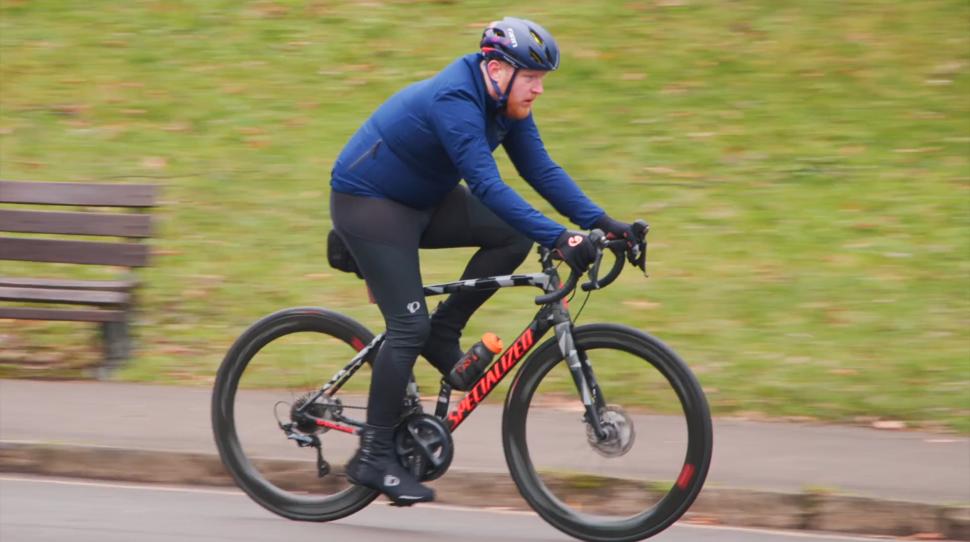

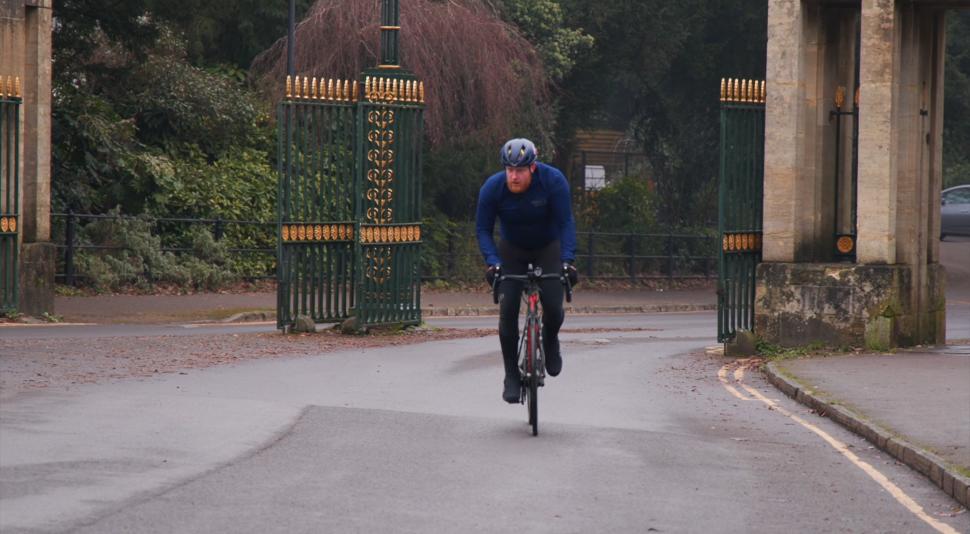
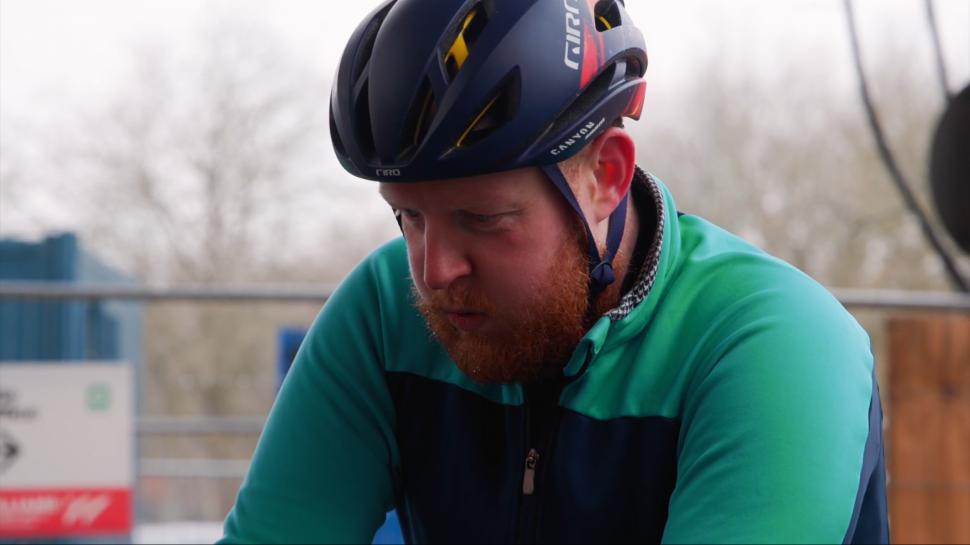
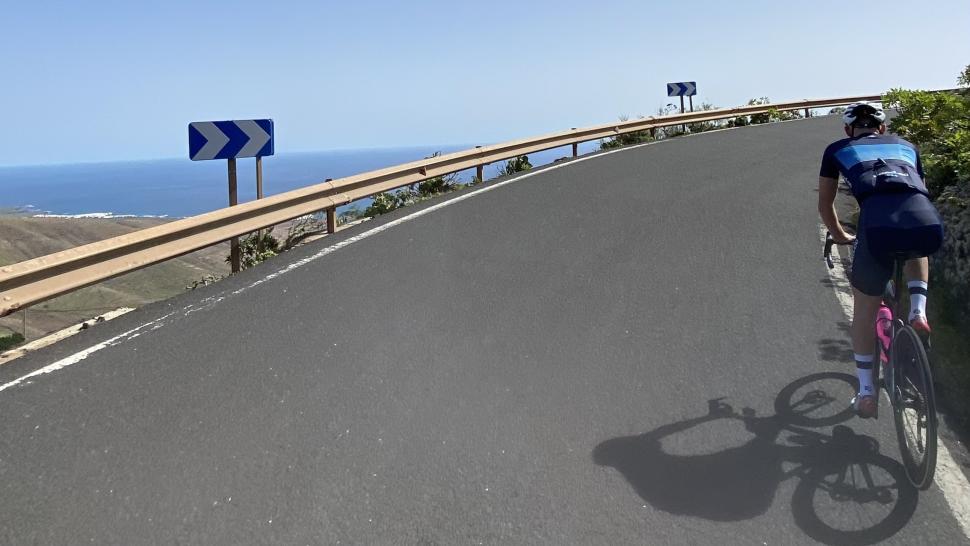
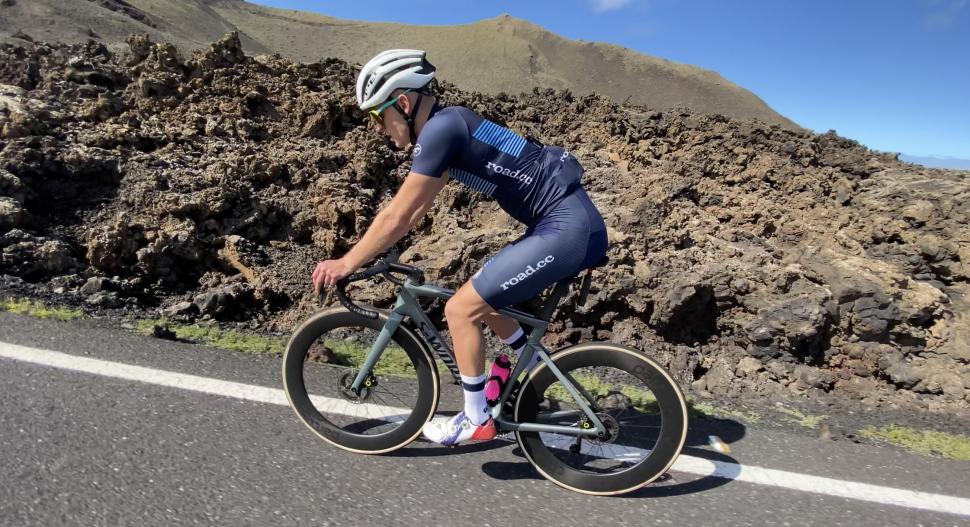

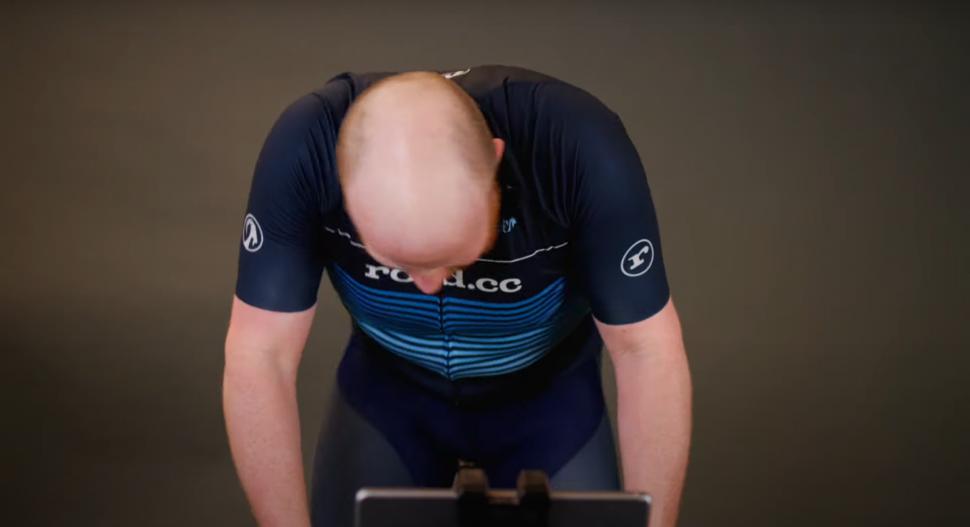
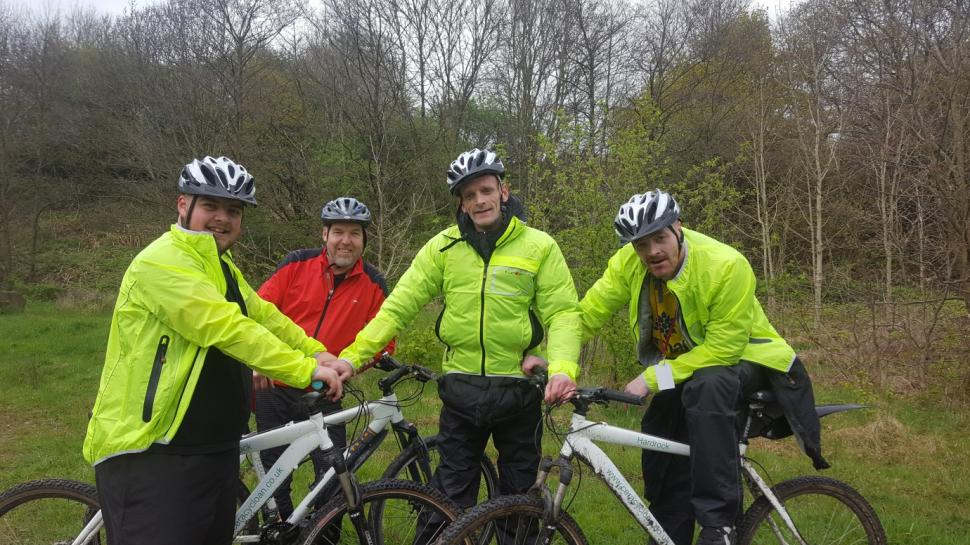

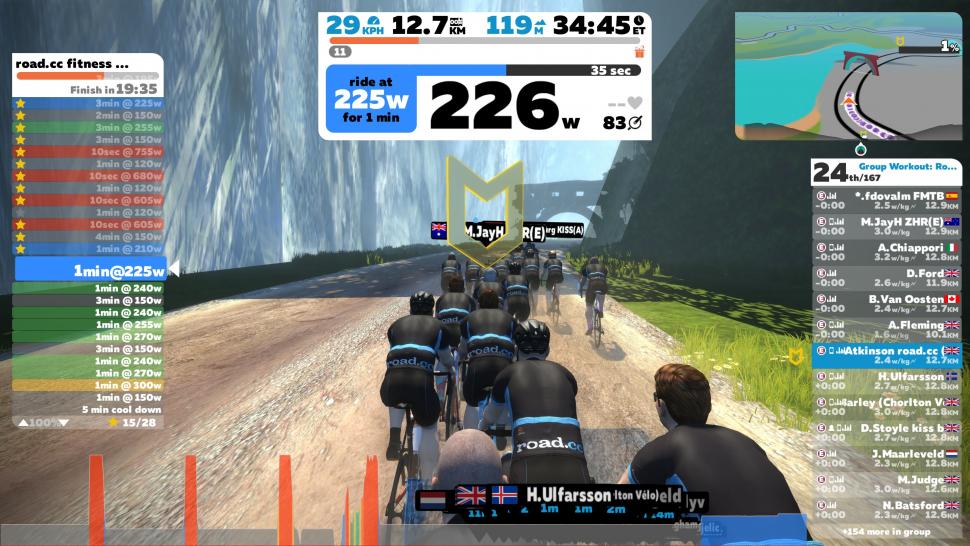
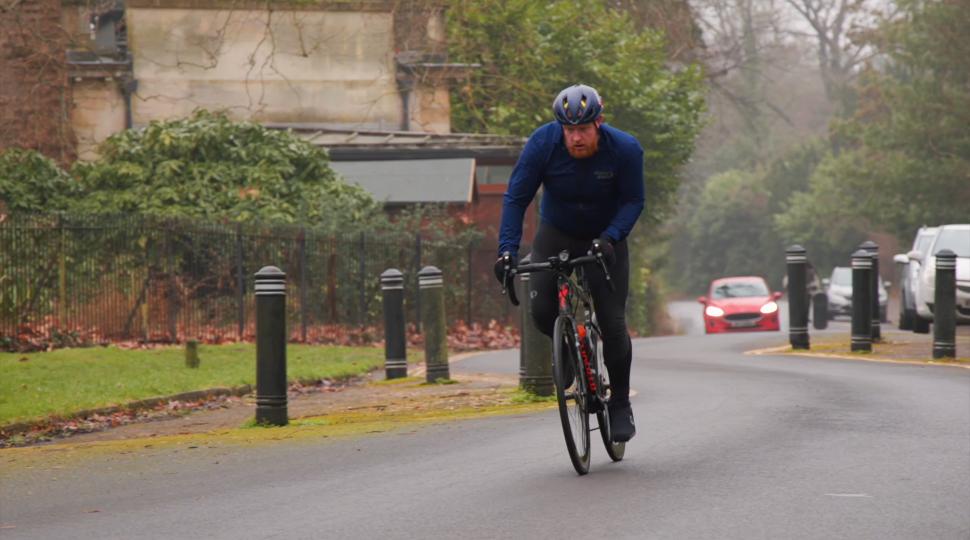
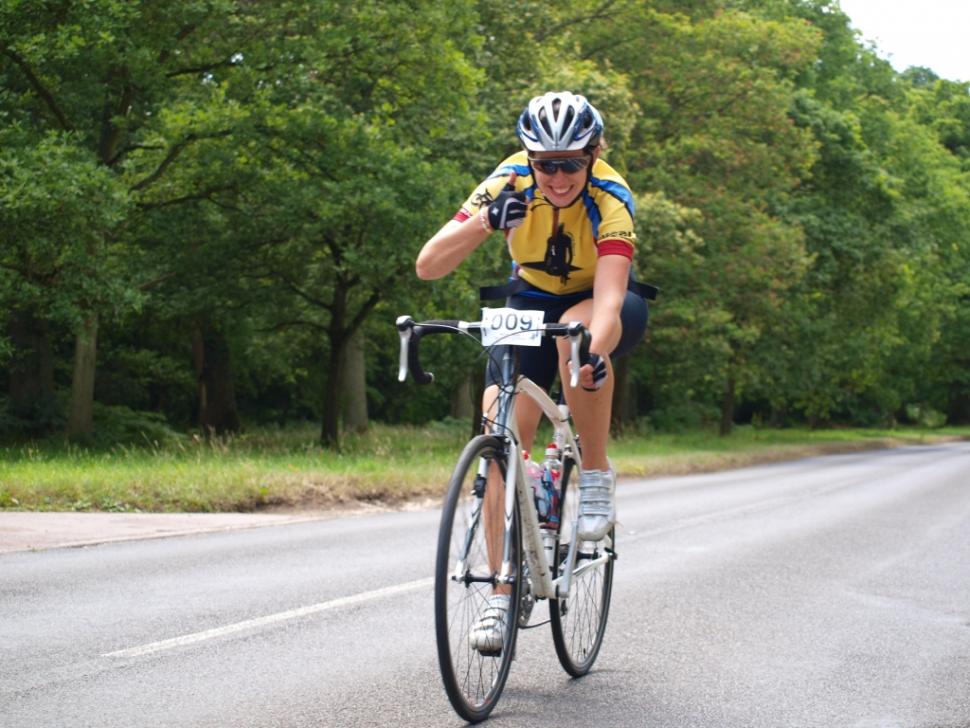
Add new comment
41 comments
The end? If only.
Wow I never knew that. By golly it all makes sense now.
I don't have a source for this but I've read somewhere that the overall calories in for people now is about that same as the 60sand 70s but sedentary lifestyles and poorer food quality have combined to give much more obesity
I agree with the formula, but think it is a harder problem than individual restraint. The increasing availability of cheap, calorie (should be Joule) rich, nutritionally-poor food since the '60s (green revolution) has not really served human nutrition well and has had major negative ecosphere impacts.
Maybe we do need to go back to turnips and be grateful for them.
I think I've said it before on here, but you can't overstate the benefits of mixing things up. Resistence/weights and multiple forms of cardio.
Even if you are really strapped for time, chucking a few planks in a day will do a world of good for your body and your cycling... as well as prepping you for the ravages of aging.
If he wants to lose weight, Jack should commute to work by bike and stop having mid morning and late night snacks and crap like post exercise protein shakes if he eats normally the rest of the day. 3 meals a day, give the pancreas a rest between 'm. If he rides at least 15 km one way he won't need to spend long hours in the saddle during the weekends to burn calories. That's 150 km/week with (where I am) the employer paying for them.
At least, I ride 23 km one way, 5 days a week and occasionally go on a really long (don't ask) ride over the weekend. Colleague of mine rides 35 km one way, every day, he's in a cycling club. During the weekends he can ride most of his club buddies into the ground.
I don't know how old you are, or indeed Jack is, but if you're youngish you might have a nasty shock when you get older. I cycle 45-50kms most days accompanying Mrs H on her commute morning and evening, plus more at the weekends, I don't snack, eat moderate healthy meals and I drink considerably less than I did in my 30s and 40s...and I have to be continually watching my weight as it seems to head northwards at every opportunity. I don't know why it should be but many friends seem to have the same experience that once you're past the half century mark the food in/exercise out calorie equation doesn't have quite the same simple accuracy it did in the 20s.
There are a whole host of reasons but mostly it's because youth's wasted on the young. Reading 'The Midlife Cyclist' has been one of the few ways I've found of raging against the injustice of it all. That and finally being able to afford a decent bottle of wine.
I'm 49. True, after about 30 you start losing muscle mass which translates to a lowered caloric need. Also true: the older one becomes, the more age-related disease strikes, which has a negative effect on activity levels and hence again decreases caloric need. Biologically, past 40 you're essentially no longer relevant on an evolutionary scale.
The bottom line is: if at 50 you eat like you ate at 25, you'll gain weight and right quick. 260 kcalories per day 'overconsumption' will lead to a weight gain of 1 kilo/month. 260 kcal = about 3.5 digestive biscuits.
So remedies: a) try to conserve as much muscle mass as possible. Ultimately this is a losing battle b) cut down on the caloric intake and c) don't become a couch potato.
Fat metabolism in men is modulated in part by Human Growth Hormone (in women it is predominantly under the control of oestrogen). HGH is produced by the body during deep sleep. Our sleep patterns change as we age, in particular a reduction in deep sleep, hence a reduction in HGH which can mean increased deposition fat. Turns out there is a sound metabolic reason for a "middle aged spread".
The way to counteract this (in part) is to increase full body resistance training to ensure muscle bulk is maintained or even increased (as per Justryingtoget's posts).
As per several other posts here, just having this information is not necessarily sufficient to make potentially significant changes to your life.
Nice to see an Anthony Maynard jersey...
Pages